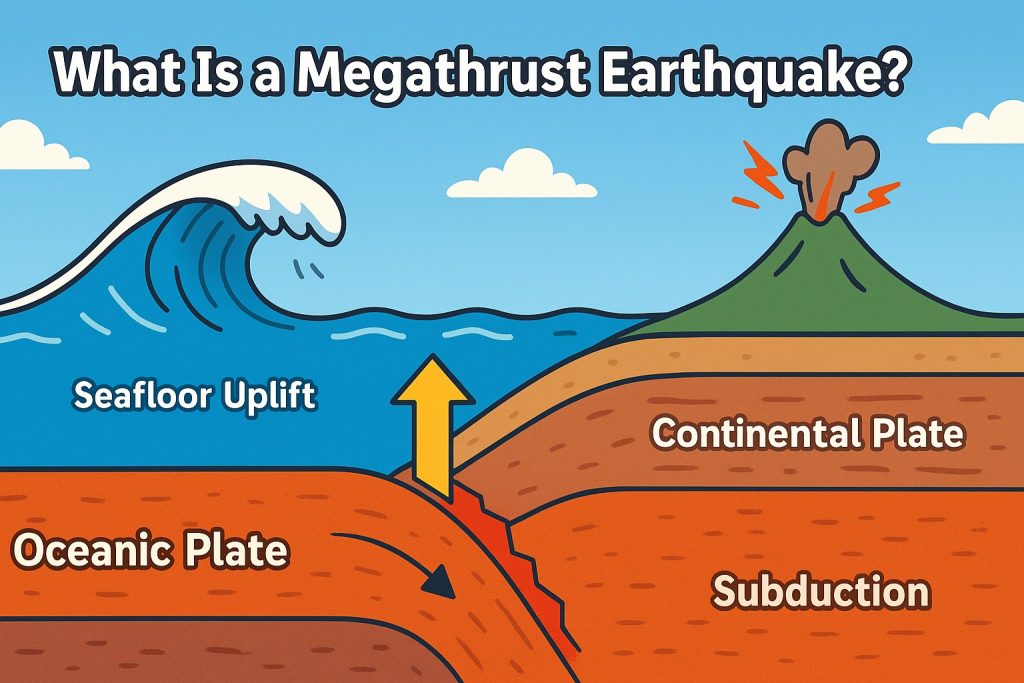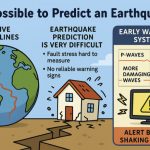A megathrust earthquake is the most powerful type of earthquake known to science, occurring at subduction zones where one tectonic plate is forced beneath another. These colossal quakes often exceed magnitude 8.0 and are capable of triggering devastating tsunamis, landslides, and widespread destruction over thousands of kilometers. The infamous 2004 Indian Ocean and 2011 Tōhoku (Japan) earthquakes were both megathrust events.
Where Do Megathrust Earthquakes Occur?
Megathrusts form at convergent plate boundaries, particularly along deep oceanic trenches. As one plate dives beneath another, immense frictional stress accumulates. When that stress is suddenly released, a massive rupture occurs.
Key regions prone to megathrust earthquakes include:
- Japan Trench (e.g., 2011 Tōhoku earthquake, M9.1)
- Chile-Peru Trench (e.g., 1960 Valdivia earthquake, M9.5 — the largest ever recorded)
- Cascadia Subduction Zone (Pacific Northwest, USA/Canada)
- Sumatra-Andaman Trench (e.g., 2004 Indian Ocean tsunami quake, M9.1)
- New Zealand’s Hikurangi Margin
How Megathrust Earthquakes Work
- Subduction: An oceanic plate slowly slides beneath a continental or another oceanic plate.
- Stress Accumulation: The plates lock together, building tension for centuries.
- Sudden Release: When the stress exceeds rock strength, the fault ruptures violently.
- Seafloor Uplift or Drop: The ocean floor may shift several meters in seconds, displacing enormous volumes of water.
- Tsunami Generation: This movement triggers tsunamis that race across oceans at speeds over 800 km/h (500 mph).
The rupture zone can stretch hundreds to over 1,000 km, shaking land for minutes and unleashing secondary disasters like fires, nuclear accidents (as in Fukushima), and infrastructure collapse.
Historical Megathrust Events
- 1960 Valdivia, Chile (M9.5): Deadliest and strongest quake on record; triggered 25-meter tsunamis and killed thousands.
- 2004 Indian Ocean (M9.1): Caused a tsunami that killed over 230,000 people in 14 countries.
- 2011 Japan (M9.1): Shook northeastern Japan, killed 20,000+, and led to the Fukushima nuclear crisis.
- 1700 Cascadia (estimated M8.7–9.2): Caused a trans-Pacific tsunami recorded in Japanese history.
Are Megathrusts Predictable?
While exact predictions are not possible, scientists monitor:
- Seismic gaps (quiet zones along faults)
- Crustal deformation using GPS and satellites
- Historical recurrence intervals from geological records
- Slow-slip events, which may precede large ruptures
Regions like Cascadia and Hikurangi are under close surveillance due to signs of accumulating stress and historical evidence.
Why Megathrust Earthquakes Matter
- They cause global-scale disasters — physical, economic, and humanitarian.
- Many coastal megacities lie within high-risk zones.
- Improving early warning systems, evacuation routes, and public awareness is critical for saving lives.
Glossary
- Subduction zone: A region where one tectonic plate slides beneath another.
- Tsunami: A massive ocean wave caused by sudden seafloor movement.
- Seismic gap: A segment of a fault that has been quiet but is expected to rupture.
- Crustal deformation: The bending and movement of Earth’s crust due to tectonic forces.
- Slow-slip event: A silent shift along a fault that may indicate growing stress.


